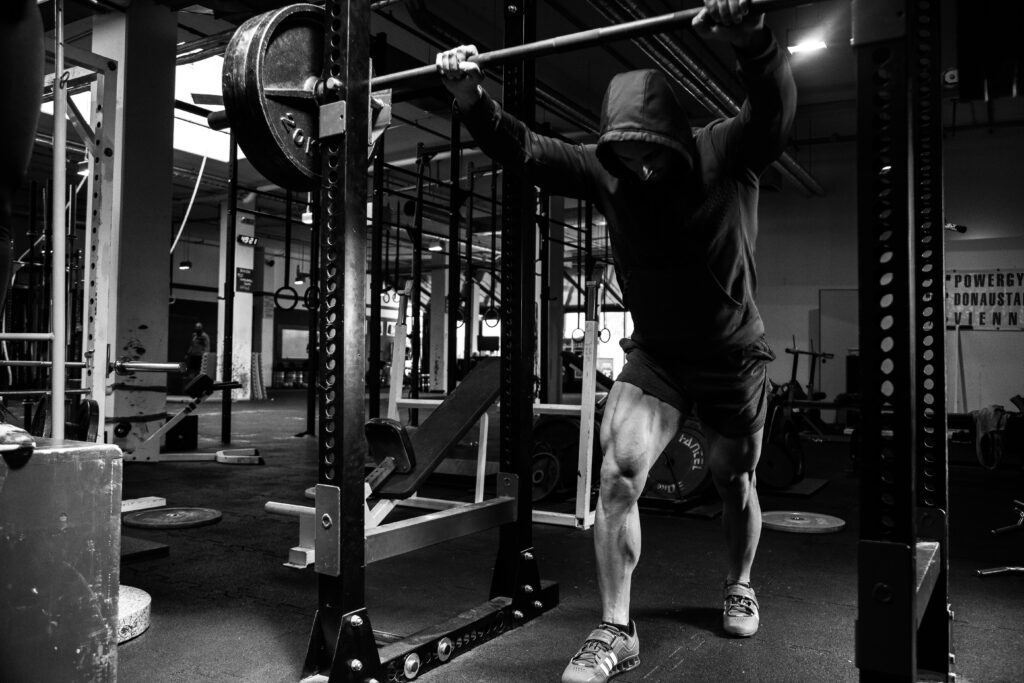Eccentric Training – Boost Strength and Prevent Injuries
Introduction
Eccentric loading has gained attention especially in strength training and rehabilitation. It’s praised for its effectiveness—but what exactly is it, and why does it work so well? This post takes a closer look at the science behind eccentric training, with practical applications in mind.
What is eccentric loading?
- A type of muscle contraction where the muscle lengthens while producing force (e.g., the lowering phase of a squat or pull-up).
- In contrast to concentric (shortening) and isometric (static) contractions.
Why is it effective?
- Muscles can handle greater loads eccentrically than concentrically.
- More motor units are recruited and with higher force.
- Mechanical tension and microdamage stimulate muscle growth and tendon adaptation.

Scientific Perspective
- Eccentric vs. Concentric Activation
Research shows that eccentric contractions can produce higher forces with lower electrical activation compared to concentric ones. This may be due to passive mechanical components such as titin. - Tendon Adaptations and Injury Prevention
Eccentric training increases tendon tensile strength and resilience. It’s particularly beneficial for preventing and rehabilitating Achilles and patellar tendon issues. - Developing Force Production
Eccentric training improves 1RM performance and explosive strength. It’s a powerful method for both elite athlete programming and developmental phases.
Eccentric Training and Flywheel Devices
Flywheel training has emerged as a promising method, especially for older adults. Unlike gravity-dependent equipment, flywheel devices use kinetic energy stored and released via an inertial flywheel, allowing both effective concentric and especially eccentric loading (Maroto-Izquierdo et al., 2017).
A systematic review and meta-analysis by Vicens-Bordas et al. (2020) found that flywheel training improves muscle strength more effectively than traditional resistance training—especially for the lower body—while enhancing muscle activation, jump performance, and sprint capacity.
It has also been shown to promote hypertrophy and prevent injuries, making it an excellent tool for athletes and aging populations alike to maintain function and counteract sarcopenia.
How to Program Eccentric Training
Methods:
- Tempo training: 3–5s eccentric phase, explosive concentric
- Negative reps: loads heavier than 1RM, lowered under control
- Flywheel exercises: inertia creates eccentric resistance
- Examples: Nordic hamstrings, Romanian deadlifts, eccentric calf raises
Recovery:
- Eccentric loading causes more microtrauma → longer recovery time
- Not recommended repeatedly on high-intensity days without proper planning
Example Program (2x/week – for advanced lifters):
| Exercise | Sets x Reps | Tempo / Method |
| Squat (eccentric emphasis) | 3 x 5 | 4s down – explosive up |
| Romanian deadlift | 3 x 8 | 3s down |
| Flywheel leg curl | 3 x 10 | Max effort pull |
| Nordic hamstrings | 2 x 5 | Controlled descent |
Photo by Alexander Red on Unsplash
References
Douglas, J., et al. (2017). “Eccentric Exercise: Adaptations and Applications for Health and Performance.”
Hortobágyi, T., et al. (1998). “Muscle activation differences between eccentric and concentric contractions.”
Mafi, N., et al. (2001). “Eccentric calf muscle training vs. concentric training in Achilles tendinosis.”
Vicens-Bordas, J., et al. (2020). Is inertial flywheel resistance training superior to gravity-dependent resistance training in improving muscle strength? A systematic review with meta-analyses.
Roig, M., et al. (2009). “The effects of eccentric versus concentric resistance training on muscle strength and mass in healthy adults: a systematic review with meta-analysis.”
Maroto-Izquierdo, S., et al. (2017). “Effects of inertial training on muscle function and structure: a systematic review.”
Beato, M., et al. (2020). “Effect of flywheel resistance training on sport-specific performance in soccer players.”
Fernandez-Gonzalo, R., et al. (2016). “Chronic eccentric training improves muscle hypertrophy and functional performance.”
Wang, R., et al. (2024). “Flywheel resistance training and balance in older adults.”
Raya-Gonzalez, J., et al. (2021). “Flywheel training effects on injury prevention and sport performance.”
Allen, W.J., et al. (2021). “Application of flywheel training in athletic populations.”
Alkner, B.A., & Tesch, P.A. (2004). “Flywheel resistance training during bed rest.”
Tesch, P.A., et al. (2004). “Using flywheel exercise to preserve muscle mass during disuse.”